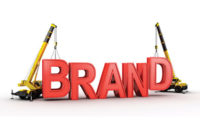This article will focus on employee recognition, which I view as the energy that is created throughout an organization when people are given credit for their accomplishments and shown gratitude for their efforts. (Editor’s Note: To read this author’s article about the first pillar of safety, employee engagement, see “The ‘heavy lifting’ of safety” in ISHN’s June issue, pp.74-75.)
Craving praise
When people are surveyed to find out why they left a job, it is interesting that time and time again “lack of recognition” and “compensation” always rank as the top two reasons. Regardless of economic conditions and other factors, these two heavyweights of job turnover rank at the top of the list. Any reason could compete with compensation as the top motivator of job change; however, this is what the data show.
What this tells us is that people have a basic, fundamental need to know that their efforts are not going unnoticed. And that this need is powerful enough to affect how they work (including how safe they work) and to motivate them in either the right or wrong direction. We see it all the time in our own lives, but may not realize that many of the same things that drive our behaviors are at play in our workplace as well.
Those of us who ever tried to lose weight know how motivational it can be when people start to notice your efforts and make comments to you about how you look (recognizing your accomplishments). I based my most successful weight loss effort not on what the bathroom scale displayed but on how many compliments I received from family, friends and co-workers. My goal was to get 10 unsolicited positive comments about my appearance, and I found it to be far more motivating than hoping for a lower number on the scale.
Along those same lines, I still have trophies that I received from playing sports as a child. I still have positive uplifting letters that I received from family members after graduating from high school and college.
And I have kept just about every plaque, certificate, email, etc. that I and my company have received from customers, employees and suppliers that recognizes our strong efforts.
Why? Why does the impact of positive praise last so long?
It is a validation of our efforts, a sign of our success, and it gives meaning to all that we do. In a workplace environment, it is the energy that flows and that pushes workers and companies to new heights.
Like every other business tactic there are better and worse ways to deploy a recognition strategy.
For the purposes of motivating safer behavior, consider the following:
- Timely: This is the most crucial factor because there is a half-life (deterioration over time) for recognition that is powerful, and the more time that goes by between the actions of an employee and the recognition of those actions, the less effective recognition will be. “You did a great job last year on that project…” is far less impactful than “You did a great job yesterday on that project…” While a slow response diminishes effectiveness, missing an opportunity to recognize someone altogether can be downright devastating. How would you feel if you just reached ten years on the job with a perfect safety record and no one noticed?
- Face-to-face: With the exception of long-haul trucking and a few other similar industries, it is relatively easy for managers to get in front of the workers they wish to recognize, and it is a missed opportunity to not do so.
Posting a “nice job” on some sort of physical or digital bulletin board (if not accompanied by a face-to-face meeting as well) is a relatively hollow way of recognizing someone’s efforts.
Dropping a note on someone’s desk, paycheck stuffers, emails and the like are all better than nothing, but not nearly as powerful as in-person recognition, where the recipient can read facial expressions and body language to truly understand the impact of their efforts.
- Rewarding: While not all recognition events should be attached to a reward, many, if not most should. Like it or not, human beings are motivated by rewards and adding a “token” to your expression of appreciation oftentimes has a multiplier effect on the power of the moment.
The average American household participates in 18 customer loyalty programs (grocery stores, gas stations, credit cards, airline miles, etc.) and the companies that offer such programs do so because they motivate behavior. To a certain extent that same dynamic is at play with workers, and rewarding at appropriate levels is sure to add more buzz and power to your recognition program.
- Tangible: Whenever possible, there should be some tangible delivery vehicle for the recognition, regardless of whether or not there is a reward attached to it.
Football players are applauded for making a good hit and oftentimes rewarded with a sticker that they put on their helmet as a visible/tangible display of their accomplishment.
Being handed a letter from the boss stating that your safety suggestion was the best one submitted and that it will be implemented is far better than simply being told you made a good suggestion. The tangible element of that piece of paper, or that certificate, or that actual award (TV, jacket, fishing pole) adds great emphasis to the recognition event.
- Public: More often than not workers will find a recognition event to be more powerful when it occurs in front of their co-workers. (There are some exceptions to this rule, and managers should be careful to know their workers before committing to a public event.)
Being recognized in front of one’s peers helps legitimize the accomplishment for those receiving the recognition. It allows them to climb higher on the needs pyramid (Maslow’s Hierarchy of Needs) to reach the self-esteem level, which is characterized as a point in a person’s development in which they desire recognition and respect. Reaching this level on Maslow’s chart allows a worker to bask in the glow of their accomplishments without the need for self-promotion.
- Genuine: Finally, recognition must be authentic. It should not be perceived as a manager simply doing their duty. If the recognition seems hollow to the recipient, then it can have no positive effect at all, and may even have a negative impact in some circumstances.
Managers need to be sincere because even though workers do want to be recognized, they don’t want to be pandered to, and they will not respond well to false praise. This can be the most difficult area for some companies, because it is reflects on the personalities of those in charge of engagement and recognition. Affecting change on those personalities can be a challenging task.
An employee who receives timely, public recognition of their accomplishments while being rewarded with a tangible token of appreciation -- and occasionally with tangible awards -- will crave more of the same, and will act accordingly to earn additional respect and recognition of their efforts. This is why recognition is one of “The Four Pillars of Safety” and why it is so crucial to creating a great safety culture.






